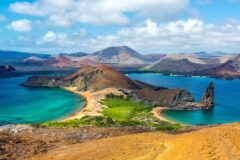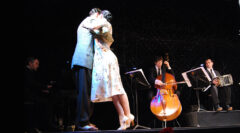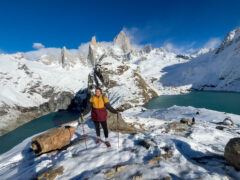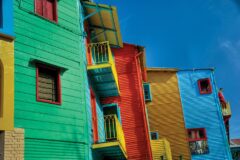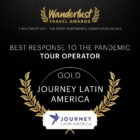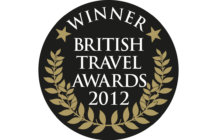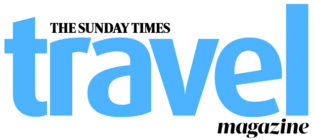Private Journeys
Self-drive Argentina: Highlights of the hidden northwest
14 days from £3,650pp
(based on two people sharing & excluding flights)
Essentials
-
Tour info
-
Country info
-
What's included
Tour info
Transport
3 domestic flights; self-drive in the northwest.
Accommodation
This holiday offers good quality mid-range accommodation in the cities and small towns of the northwest, Buenos Aires and Iguazú.
Meals
Breakfast daily.
Guides
We carefully select our local partners, some of whom we have worked with for over 30 years. Their English-speaking guides understand the expectations of our clients very well, and are consistently singled out for praise by the latter on their return.
Summary Of Nights
14 days, 13 nights: Buenos Aires 2; Iguazú 3; Salta 1; Molinos 1; Cafayate 1; Purmamarca 2; Salta 1; Buenos Aires 2.
Budget
It is very difficult to give a guideline for essential expenses but a budget of around US$50-70 per day should cover the cost of meals not included in the holiday itinerary, drinks and the odd souvenir. Eat at the best restaurants in cities and you will pay considerably more. In addition, you should budget a total of US$100 to cover the cost of fuel.
Currency
The unit of currency in Argentina is the Argentine peso.
How To Take It
For our latest currency advice for Argentina please see our FAQs section.
Tipping
Tips are welcomed and local guides often rely on their tip as a significant proportion of their income.
Most service industry workers will expect a tip of some kind and so it is useful to have spare change for hotel porters, taxi drivers and the like. It is common to leave 10 – 12% in restaurants.
Insurance And Documents
Travel insurance is essential. Details of our recommended policy can be found on our Travel Insurance page.
Car insurance:
Argentina (your trip is based on a medium category 2WD vehicle): Limited collision damage waiver and vehicle theft protection (CDW/TP) cover is included, with an excess payable. Additional CDW/TP cover with zero excess can usually be purchased at additional cost. Please check the level of your coverage with us when making your booking. We strongly recommend you consider buying your own car hire excess waiver insurance policy before you travel: these are widely available from insurance companies in the UK. All incidents involving collision, robbery and theft must be reported to the police and a report obtained. Let us know if the transmission (automatic or manual) is important to you, or if you prefer a different type of vehicle: although we cannot guarantee availability we will do our best to help.
An international driving permit (IDP) is officially required for Argentina. Since 2015 new regulations have applied concerning the paper counterpart of UK driving licences. Please check https://www.gov.uk/government/news/driving-licence-changes for further details.
You will need to return the car to the specified office at the end of the rental period. If you are leaving on a morning flight we advise you to do this the day before you depart.
Airport Taxes
If you have purchased your flights through Journey Latin America, the international departure tax is usually included in the ticket.
Trip Suitability
The self-drive element of this holiday will suit independent-minded clients seeking the freedom to explore without the support of local guides and drivers but with the security of pre-booked accommodation. You should be confident to navigate along roads outside the UK, driving on the right. Some Spanish as well as mechanical knowledge, for example the ability to change a tyre is highly recommended. We advise you to let us know if you have a strong preference for automatic or manual transmission as vehicles supplied can vary. You will receive basic written directions and we will send you our helpful tips specific to driving in Argentina.
There’s about 1000km of driving – 850km on paved highway, the rest on ripio (gravel) roads. A 2-wheel drive vehicle is sufficient to complete the route but a 4×4 will be more comfortable (and is recommended) if you’re going during the rainier months (Jan-Mar) when the gravel stretches of the Calchaquies Valleys can become more challenging. Please speak to us if you wish to upgrade to a 4WD. In all the summer months, Dec-Mar, when the weather is extremely hot and humid, and you might bear this in mind if travelling with small children or elderly persons.
Petrol is easy to come by in Salta and Cafayate – elsewhere be sure to keep an eye on your fuel tank and fill up where possible as you won’t find any service stations in the countryside.
If you have a disability or other special requirements, please call us.
Climate
In Buenos Aires, October to November and March to April see temperatures between 15 and 25°C and a good deal of sunshine. January to February is hot, with temperatures over 30°C.
In sub-tropical Iguazú December to March are the hottest and most humid months, with temperatures sometimes reaching 40°C, and rain which falls in heavy showers. From June to September, temperatures are more moderate (18-23°C) and there is plenty of sunshine, but cold fronts can usher in periods of up to several days of cloud and drizzle and distinctly chilly temperatures.
Salta has plenty of sun throughout the year but it can be cool in winter, but it is drier with little rain falling Apr-Oct. Jan-Feb is the wettest period.
Clothing And Special Equipment
In the southern hemisphere summer (Dec-Mar) it will be hot in both the cities – Buenos Aires and Salta – and the countryside, so take loose-fitting light clothing for maximum comfort. An umbrella offers good protection from tropical showers. You will need sunglasses and head protection. In the shoulder seasons (Apr-May and Oct-Nov) the weather should be similar to a good British summer, while the winter (Jun-Sept) is more like British autumn or spring, so you need clothes appropriate to those climatic conditions.
At the Iguazú Falls you can get very wet from the spray. Some visitors like to take dry clothes in a dry bag.
If you plan to go to good restaurants or out on evening entertainment trips, you might bring something a bit smarter as well (although formal attire will not be required).
Please get in touch with the office before departure if you have any doubts.
Vaccinations
Preventative vaccinations are recommended against the following: polio; tetanus; typhoid. For specific requirements you must consult your GP.
You can also find helpful information on the Masta Travel Health website.
Visas
Holders of a full British passport do not require a visa, although passports must be valid for at least 6 months after the trip begins. Anyone with a different nationality should enquire with us or check with the relevant consulate.
If flying to the US, or via the US you will need to fill in your online ESTA application.
Country info
When is the best time to visit Argentina?
Argentina is so large it’s always a good time to go somewhere. The southern hemisphere summer is the reverse of our own, with Dec-Feb being high summer in Patagonia. Spring (Oct-Nov) and Autumn (Mar-Apr) can still be very pleasant and are quieter. While summers in the lake district are reliably warm and sunny, the further south in Patagonia you go the more unpredictable the weather. In Winter (June-Sept) some hotels in Patagonia close, while others stay open for skiers. Buenos Aires, Mendoza and Córdoba enjoy a Mediterranean-type climate, with cool winters and very warm summers. North-west Argentina (Salta and Jujuy) enjoy sunshine and warm temperatures year-round but are influenced by altitude and the high Andes, with occasional cold snaps (June-Sept) and a rainy season (Jan-Feb). Iguazú Falls and Misiones has a subtropical climate, although it can be chilly July-Sept.
For more detailed information visit our When To Go section.
What is the official language of Argentina?
The official language of Argentina is Spanish.
What is Argentina's official currency?
The official currency of Argentina is the Argentine Peso.
Although cards have become more widely accepted, cash remains useful in Argentina so don’t rely solely on your cards. Taking funds in a mix of formats (a supply of US$ cash to convert into Pesos locally, along with your cards) is a sensible plan. In Buenos Aires and main tourist hubs you should have few problems paying by card but in more remote areas often only cash is accepted. You’ll also need cash for tips (eg if you pay for a restaurant meal with a card, tips are always left in cash). When changing money, denominations of US$50 and US$100 are usually preferred and you should make sure your notes are in perfect condition. Although ATMs are available, local ATM fees are high and the amount you can take out is lower than in the UK. We tend to avoid them.
We think it’s a good idea to keep an eye on Argentina’s exchange rates before you go. In addition to the official (BNA) rate of exchange for converting your US Dollars to Pesos, Argentina also uses a parallel exchange rate for foreign tourists (MEP). This is about 15% better than the official rate. Some casas de cambio will automatically apply the better tourist rate when changing your money. Others will only apply the official (BNA) rate. Rates used to process credit/debit card transactions can vary between card issuers, but you should find you get something between the official and tourist rates. Check your statement.
Try not to end up with a lot of leftover Pesos at the end of your time in Argentina, as it is difficult to change them to other currencies. You should be able to spend them at the Duty Free shop at Buenos Aires airport.
Please note that given the changeable situation with the Argentine economy, currency matters can change at short notice.
What's the time difference between Argentina and UK?
The time difference between Argentina and UK is GMT -3 hrs. Sometimes daylight saving is observed in the summer, from Sep/Oct to early Mar, but not every year.
Do I need a visa for Argentina?
Holders of a full British passport do not require a visa, although passports must be valid for at least 6 months after the trip begins. Anyone with a different nationality should enquire with us or check with the relevant consulate.
If flying to the US, or via the US you will need to fill in your online ESTA application.
What vaccinations do I need for Argentina?
Please check Travel Health Pro for information on health recommendations and vaccinations for the destinations you are visiting. Please note that many Latin American countries require proof of vaccination against Yellow Fever if you have recently travelled to another country where Yellow Fever is present.
Which other countries combine well with Argentina?
Chile, accessing the country by crossing the Andes over one of several scenic passes: from Salta in the northwest to the Atacama Desert, from Mendoza to Santiago, via the lakes crossing from Bariloche to Puerto Varas in the lake district and from El Calafate to Torres del Paine in Patagonia; Brazil, via the land crossing at Iguazú.
What are the festivals and other cultural or sporting events in Argentina?
• Tango Festival: Buenos Aires, August.
• Polo Open: Buenos Aires province, weekends in November.
• Gaucho Festivals: The pampas, early November.
How do I adapt to the altitude in Argentina?
Whilst a typical holiday in Patagonia presents no challenges with altitude, Argentina’s north-western provinces offer a taste of the high Andes with some spectacular road trips on offer. Travel to high altitude can cause mountain sickness and even if you feel fighting fit it’s important to take things easy and stay hydrated (drink plenty of water, avoiding alcohol and caffeine) as you get used to the thin, dry air. You may initially notice a headache, dizziness or breathlessness and this usually improves with acclimatisation. If you are pregnant or taking the contraceptive pill, have a medical condition such as heart or lung condition, anaemia, asthma, high blood pressure you should seek the advice of your GP before booking. We also recommend you check your travel insurance covers travel to high altitude. If you’re taking the family, remember small children may be less capable of communicating altitude-related symptoms effectively: keep an eye on them too. Rest assured we will plan your itinerary carefully, taking into account any time spent at altitude. If you have any questions or concerns about altitude please speak to your travel expert.
Further advice on travel to altitude is available on www.travelhealthpro.org.uk
Inspired by this trip
Our exciting range of articles on Latin America explore everything from iconic destinations and lesser-known cultural gems to delicious traditional recipes. You’ll also find exclusive travel tips, first-hand client reviews and the chance to get your personal questions answered by our travel experts.
Papagaio
Your edit for Latin American inspiration
Our exciting range of articles on Latin America explore everything from iconic destinations and lesser-known cultural gems to delicious traditional recipes. You’ll also find exclusive travel tips, first-hand client reviews and the chance to get your personal questions answered by our travel experts.
View Extraordinary Inspiration